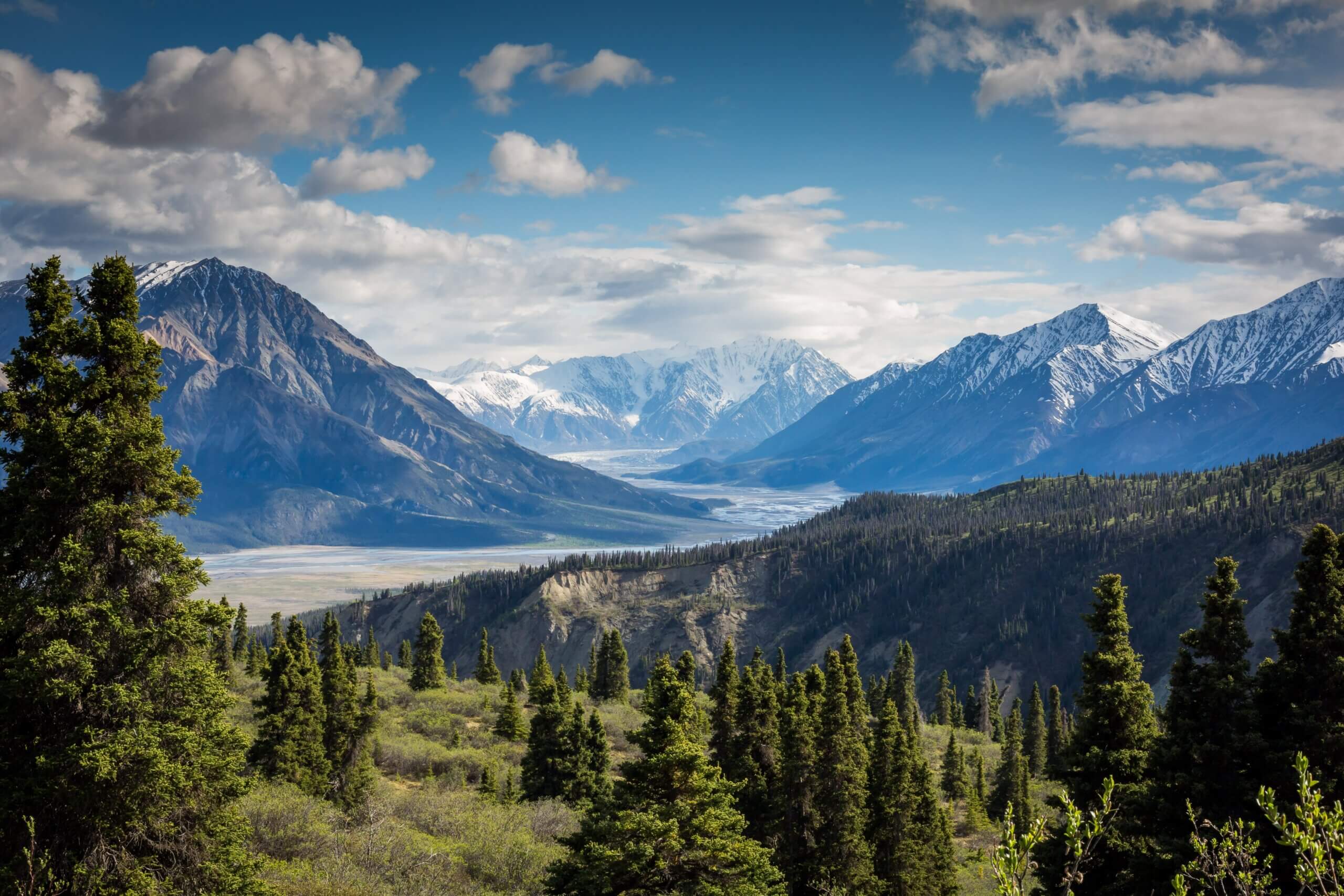*FYI - this post may contain affiliate links, which means we earn a commission at no extra cost to you if you purchase from them. Also, as an Amazon Associate I earn from qualifying purchases. Check out our Privacy Policy and Disclosure for more info.
From the highest mountain in Canada to the smallest desert in the world, the Canadian territory of Yukon provides visitors with plenty of incredible things to see and do!
Yukon (previously called Yukon Territory and sometimes still called the Yukon) is the most westerly of Canada’s three territories, known for the Klondike Gold Rush and lots of wildlife. There’s definitely more to discover in this territory though, including centuries of Indigenous history.
In this post, we’ll be sharing our top picks for places to visit in the Yukon, such as the most stunning natural sights (about 80% of the region is wilderness) and man-made attractions.
We hope you enjoy learning about this beautiful region and be sure to let us know in the comments which Yukon must-sees we should add to our list!
Emerald Lake
There’s an Emerald Lake in BC, but if you head up to the Klondike Highway near Carcross you’ll find that one of the most popular Yukon tourist attractions is also called Emerald Lake!
Known as “Rainbow Lake” by the First Nations, this picturesque tract of water features a rare gradient of turquoise shades caused by light reflecting off marl in the shallow waters. There’s a viewpoint directly off the Klondike Highway where drivers can pull over to take photos of the lake or take the time to hike all the way around.
Not far along the highway, if you continue towards Carcross, is another lake that’s also stunning: Spirit Lake. There’s even a motel, restaurant and RV park here for those who want to stay over and spend more time exploring these two beautiful lakes.
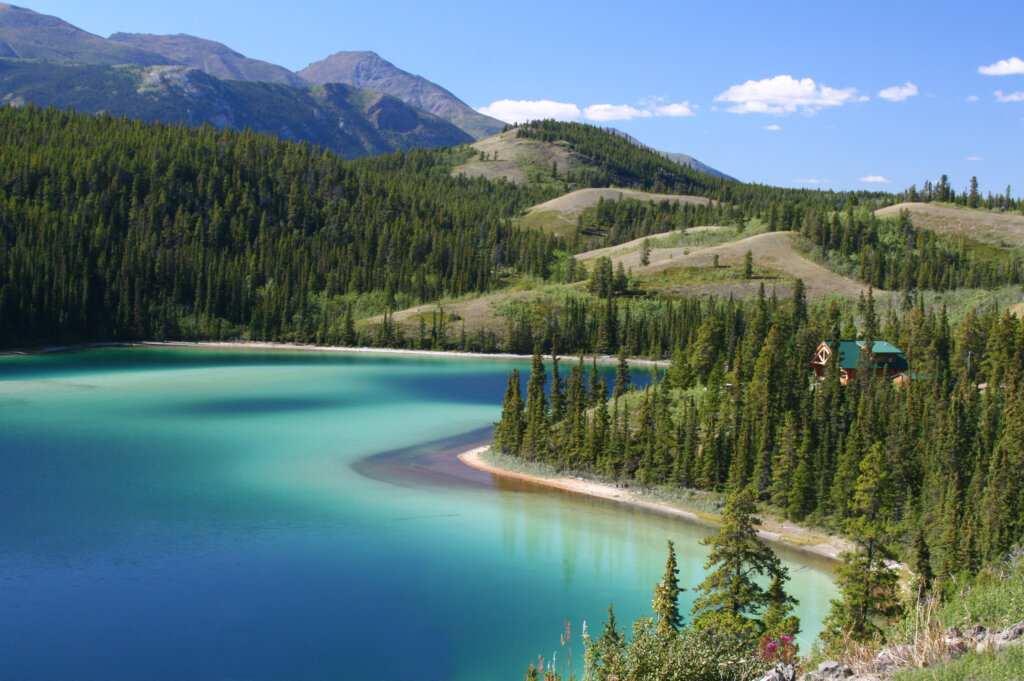
Tombstone Territorial Park
One of the most interesting places to visit in the Yukon is Tombstone Territorial Park, home to Tombstone Mountain which was so named because of its resemblance to a gravestone!
Tombstone Territorial Park protects plenty of wildlife, including the “Canadian Big Five” of Dall’s sheep, caribou, moose, black bears and grizzly bears. There are also many smaller mammals and more than 150 bird species for the bird-nerds to spot.
Visitors should start off at the Tombstone Interpretive Centre on the Dempster Highway to learn more about the history of the region, and to buy any camping permits, fishing licences or maps that might be needed.
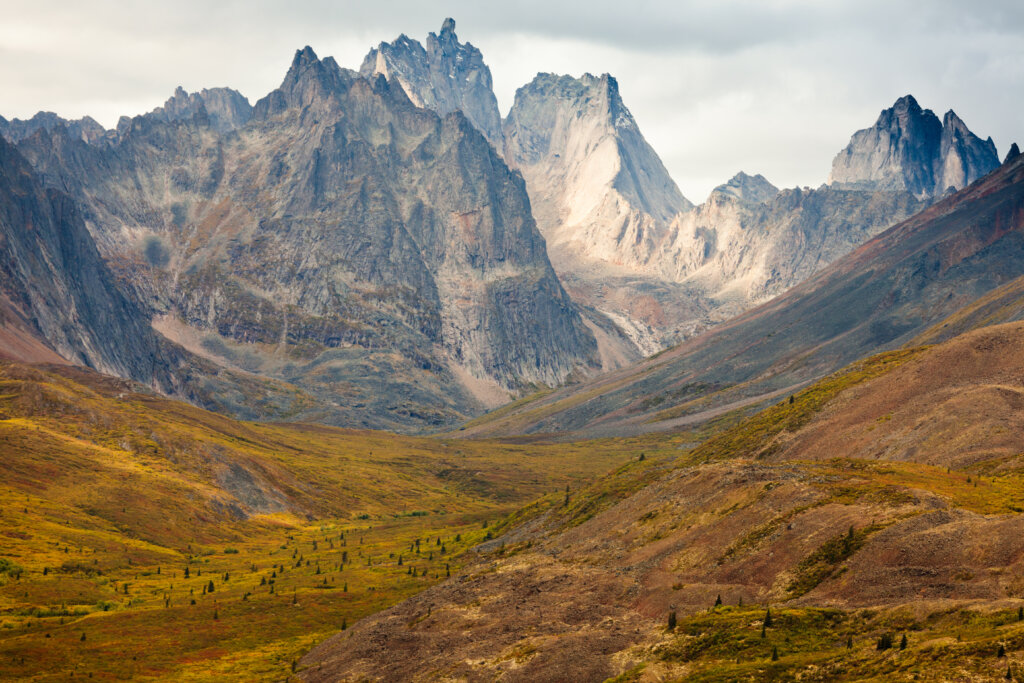
Miles Canyon
Not far from the capital city of Whitehorse is one of the most incredible places to go in the Yukon, Miles Canyon, which was formed 8.5 million years ago.
This canyon was formed by basaltic lava, leaving behind a canyon of volcanic rocks through which the Yukon River flows. During the Yukon Gold Rush, this was an important route for goods and gold, although the rapids made it quite dangerous until the Whitehorse Dam was constructed.
Today the river is not quite so dangerous for those who wish to travel through Miles Canyon by kayak, although it’s still a thrilling sight to see the cliffs of basalt rising up above. There’s also a suspension bridge across the canyon for those who prefer to sightsee from dry land (or a bridge).
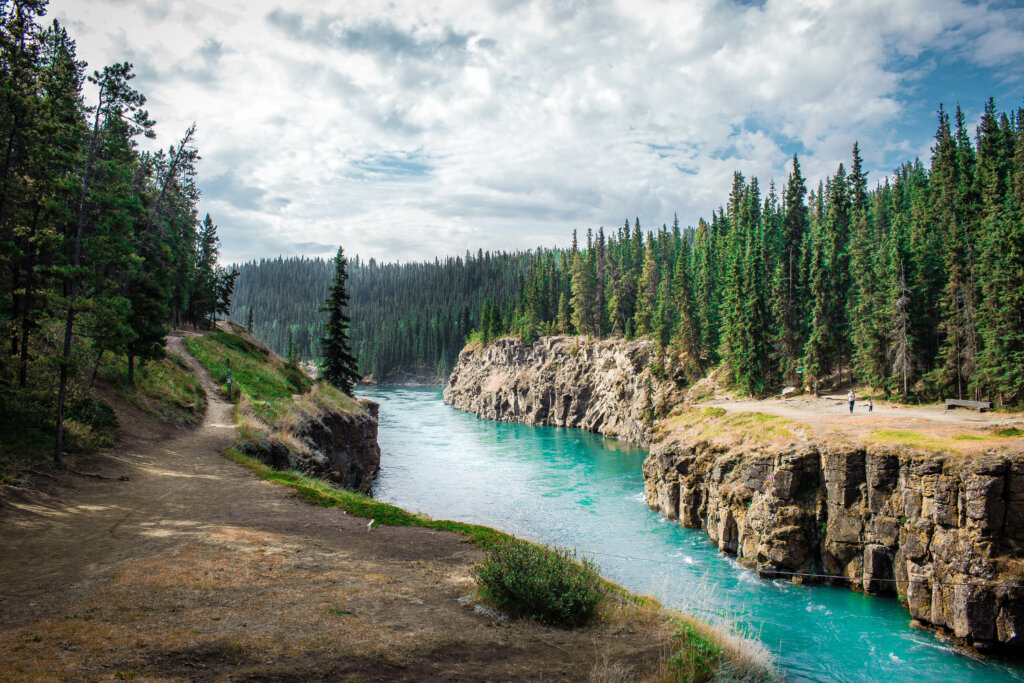
Watson Lake Sign Post Forest
The Watson Lake Sign Post Forest is one of the most unique and famous Yukon places to visit during a road trip along the Alaska Highway.
This unusual attraction started when a U. S. Army Engineer named Carl Lindley put up a signpost and added the distance to his hometown of Danville, Illinois in 1942. Since then, more than 80,000 signs have been added by people from all over the world, including street signs, welcome signs and licence plates from cars.
A visit to the Watson Lake Sign Post Forest certainly makes for an exciting photo opportunity, as you see if there are any signs from your own hometown – or perhaps add one yourself! You can make signs at the Visitor’s Interpretive Centre, which is open daily from mid-May to mid-September, between 8am and 8pm.

Carcross Desert
If you’re looking for more unusual places to see in the Yukon then don’t miss out on tiny Carcross Desert, the smallest desert in the world!
While covering just 2.6 square kilometers (1.0 square miles), Carcross Desert still manages to house a number of rare plants such as the Yukon lupine and Baikal sedge flower.
Technically Carcross Desert is a series of sand dunes rather than an ‘actual’ desert since the weather is considered to be too humid for a true desert, although the area does receive significantly less rain than the region surrounding it. It’s still worth a visit though, especially if you want to do some sandboarding or beach volleyball.
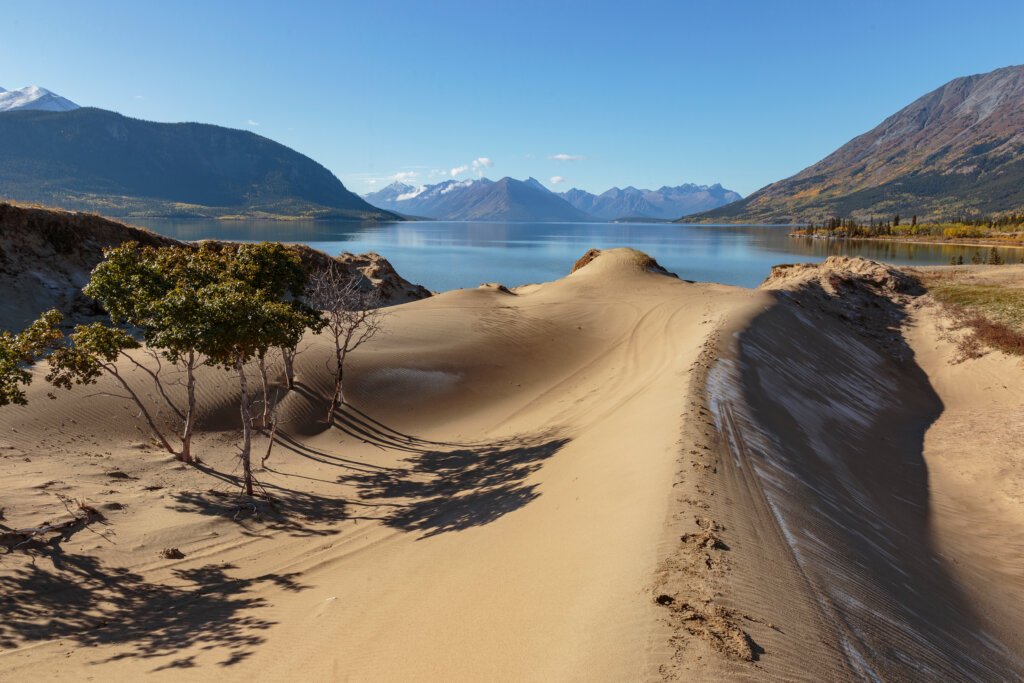
Dawson City
Anyone who’s interested in history will find that Dawson City is one of the best places to visit in the Yukon.
Dawson City was the center of the Klondike Gold Rush when around 100,000 prospectors moved to the area between 1896 and 1899 hoping to make it rich. While the population dropped after the gold rush, and then again after WWII when the Alaska Highway was built, today Dawson City remains a popular tourist spot.
Many original 19th-century buildings remain in Dawson City and there are often tour guides in gold rush era garb to show visitors around. Must-visit attractions include the Dawson City Museum and the Dänojà Zho Cultural Centre.
Dawson City is home to the oldest casino in Canada, Diamond Tooth Gerties Gambling Hall, and also hosts The Great Klondike International Outhouse Race each year- where contestants must race an ‘outhouse’ through obstacles on the streets!
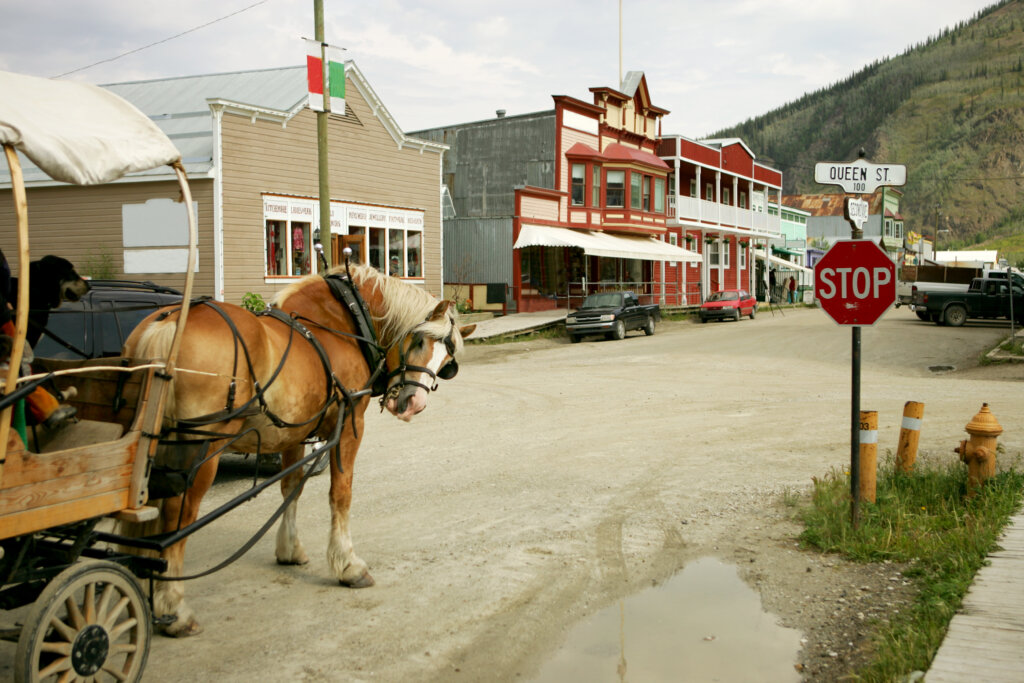
Kluane National Park
Visitors to Kluane National Park will be rewarded with some of the most stunning Yukon scenery, including ice fields, forests and towering peaks.
In fact, of the 20 highest mountain peaks in Canada, 17 of them are located within Kluane National Park, along with the number one highest: Mount Logan. Not surprisingly, this park is popular with visitors who want to mountain climb, hike, mountain bike, ski or go horseback riding.
Kathleen Lake within the park is also popular with fishing and boating enthusiasts, while opportunities abound to go rafting on the Alsek River.
If you only have limited time, head to the Kluane National Park and Reserve Visitor Centre or the Da Kų Cultural Centre to learn which sites are important to the Champagne Aishihik First Nations people.
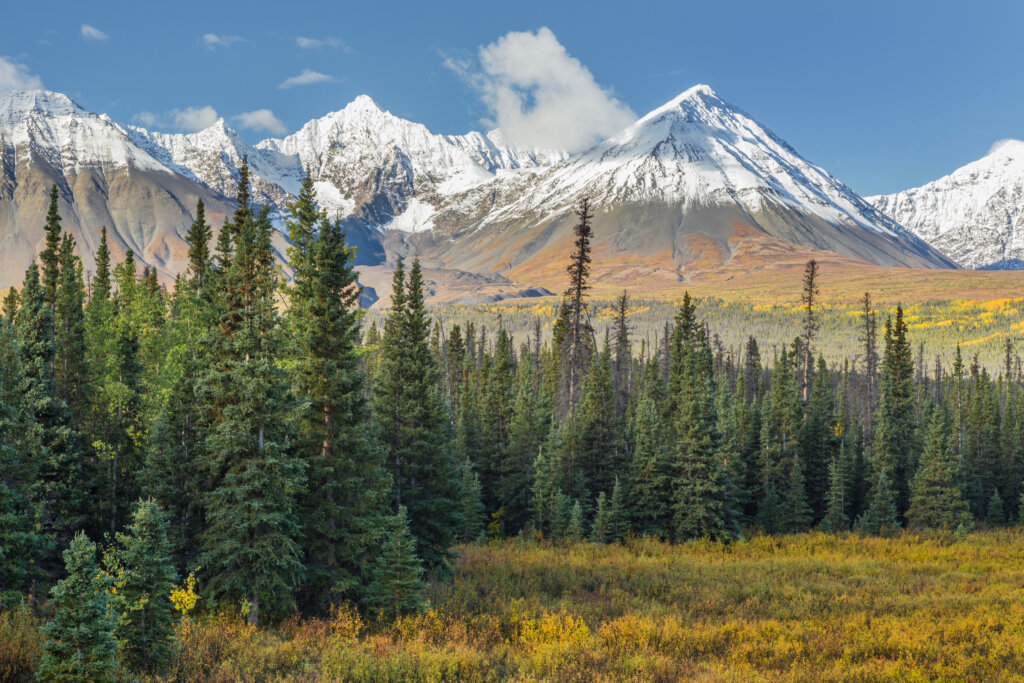
Tagish Lake
One of the most spectacular sights in the Yukon is Tagish Lake, which is so big that it also extends into British Columbia.
Tagish Lake stretches for more than 100 kilometers and has two main arms, the longer Taku Arm in the east (mostly in BC) and Windy Arm in the west in the Yukon. The western part of the lake in Yukon was part of the route that prospectors used to get to the Klondike during the gold rush.
The area around Tagish Lake is great for spotting aquatic wildlife such as beavers and otters, or land mammals like bears, moose and caribou. The town of Tagish at the tip of the lake is a great base for doing some lake fishing, boating and swimming in summer as well.

Did We Miss Any of Your Favourite Places to Visit in Yukon?
Let us know on the comments so we can add more amazing spots to our list!
